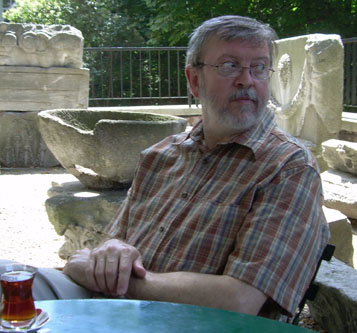While Milton Babbitt's music has long been associated with musical pedagogy, the last word anybody has attached to it is "easy". Babbitt quickly gained a reputation for writing works of staggering intellectual and technical difficulty, and despite his apparently kindly nature this rep stuck with him throughout his strikingly long career. He wasn't completely averse to writing easier pieces, though, and one of his more well-known piano pieces is also one of his easiest - Semi-Simple Variations.
Written in 1956 and published as part of Isadore Freed's excellent pedagogical series for Presser, the piece not only structures itself around palindromic rows, but it also serializes the rhythms palindromically, making it an early example of total serialism. While most musicians recoil from that term as if they had been offered a rat king for lunch, Babbitt maintains a steady, almost jazzy feel, and the experiment is surprisingly pleasant. The plot thickens when you realize that Babbitt's other pleasant piano piece also dates from 1956, and is even shorter and easier to play, the only leaf I could find Babbitt had mustered in his 95-year life.
Steady readers may remember my article on Hall Overton's A Mood, published in the excellent easy-to-intermediate anthology American Composers of Today, edited by Joseph Prostakoff and supported by the Abby Whiteside Foundation. It's probably the first and last time Babbitt wrote a piece that the listener could hear in their head by looking at the score - the two hands each start with the germ row at different transpositions and slightly different contours. The notes are selected in a way not only to appear modal at first, but to also sit on either white or black notes, a plus for younger pianists. I found a theory class curriculum that uses the piece as analysis homework, and you can see the full spread here if you want to see the "magic square". Here's the analyzed version:
Of course, that doesn't mean anybody cares, and the people least likely to care are elementary school children taking piano lessons to avoid being drafted to the local youth soccer team. Robert Taub made a pro recording of the Duet in 1985, but I found a performance by a small child at the Babbitt Memorial in 2011, held in the small recital room at New England Conservatory. Taub's out-of-print, expensive Babbitt CD might hold a better performance, but you just can't beat the charm of a girl under 5 feet playing it just fine.
~PNK


















